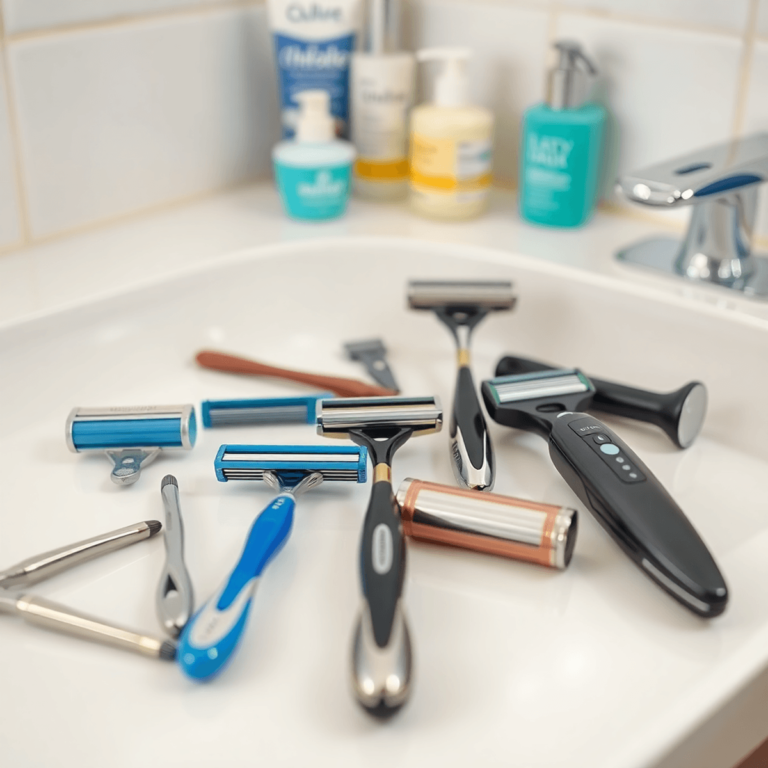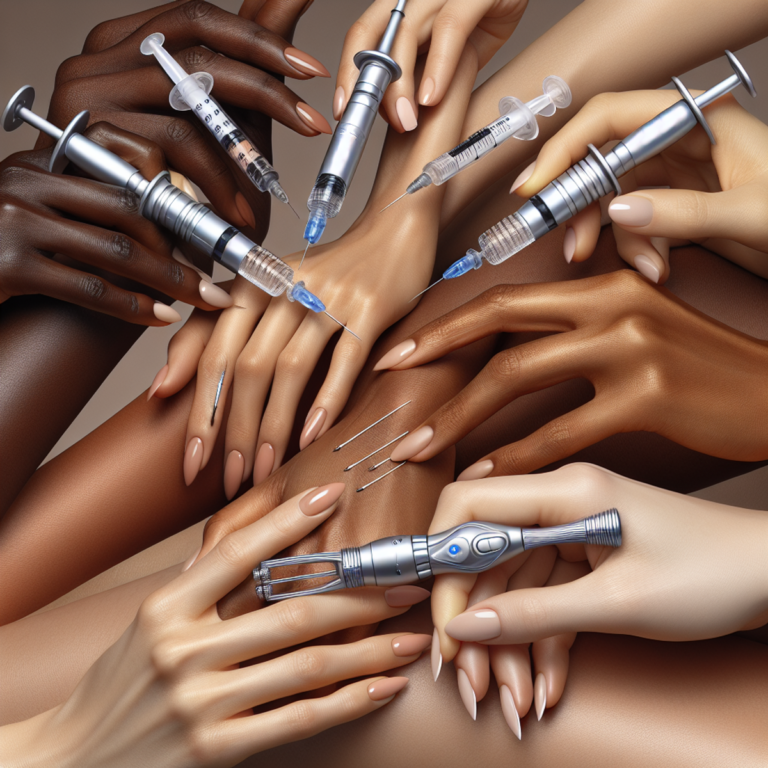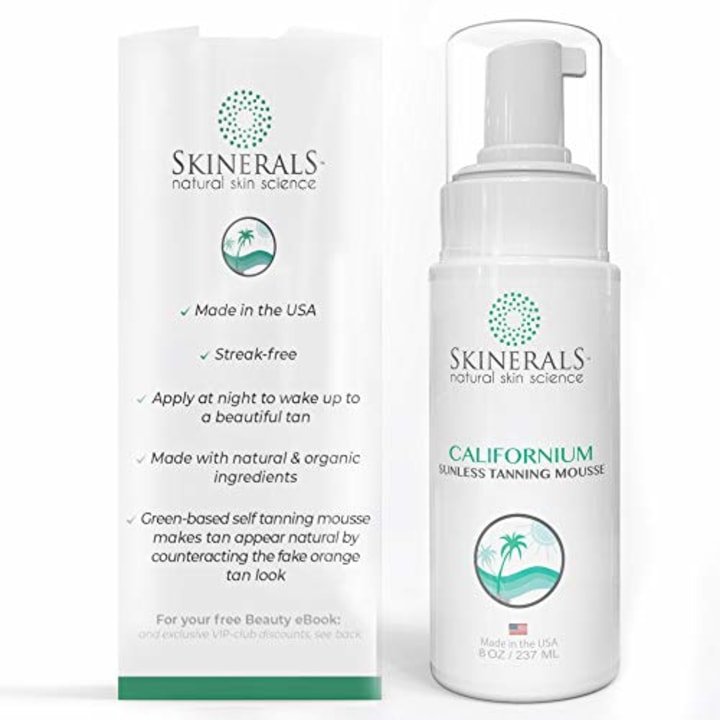How to Get Rid of Pesky Pimples Fast

Introduction
Pesky pimples and acne are a common nuisance for many. They can pop up at the most inconvenient times, affecting not just your appearance but also your confidence. Whether you’re a teenager facing hormonal changes or an adult dealing with stress-related breakouts, pimples can be a persistent issue.
Addressing pimples quickly is crucial for both physical and emotional well-being. Swift action can prevent the breakout from worsening and reduce the likelihood of scarring. Plus, clear skin can significantly boost your self-esteem, making you feel more comfortable in social and professional settings.
In this article, you’ll discover fast and effective solutions to get rid of pesky pimples. From ice application to over-the-counter treatments, we’ll explore various methods to help you achieve clearer skin. Whether you’re wondering how to remove pimples overnight or seeking long-term strategies for acne prevention, this guide has you covered.
Understanding Pimples: The Culprits Behind Breakouts
Pimples, a common skin issue, can be caused by several internal and external factors. Understanding these causes is the first step in learning how to get rid of breakouts effectively.
How Dead Skin Cells, Excess Oil, and Clogged Pores Cause Pimples
Your skin constantly sheds dead cells. When these cells mix with excess oil (sebum) produced by your sebaceous glands, they can clog your pores. This blockage creates an environment where bacteria thrive:
- Dead Skin Cells: Normally shed through the skin’s natural renewal process, but when mixed with sebum, they contribute to clogged pores.
- Excess Oil: Produced by sebaceous glands, this oil can trap dead skin cells inside pores.
- Clogged Pores: A result of dead skin cells and oil accumulation leading to blockages that become pimples.
- Skin Bacteria: Specifically Propionibacterium acnes (P. acnes), which feeds on the sebum and dead skin cells within clogged pores, causing inflammation.
How Hormonal Changes Affect Acne
Hormonal fluctuations can make acne worse by increasing oil production:
- Puberty: Increased androgen levels during adolescence can lead to higher sebum production.
- Menstrual Cycle: Hormonal changes before menstruation often trigger breakouts in women.
- Pregnancy: Hormonal shifts during pregnancy can also cause increased oil production and breakouts.
- Stress: Elevated stress levels lead to hormone surges that might increase sebum production.
Understanding these triggers is crucial for anyone looking into how to get rid of pimples on the face or how to remove pimples naturally and permanently.
Knowing the root causes helps in choosing appropriate treatments and adopting preventive measures. By addressing both internal factors like hormonal changes and external factors such as clogged pores and bacteria, you stand a better chance at managing breakouts effectively.
Fast-Acting Remedies for Pesky Pimples
1. Ice Application: Nature’s Cooling Solution
When it comes to fast pimple removal, ice is one of the most effective and immediate relief options available. Applying ice to a pimple can significantly reduce swelling and redness, making it an excellent overnight solution for those urgent situations.
How Ice Helps Reduce Swelling and Redness
Ice works by constricting blood vessels and reducing blood flow to the affected area. This helps minimize inflammation and can temporarily numb the pain associated with pimples. The cooling effect also soothes irritated skin, providing quick inflammation relief.
Step-by-Step Guide on Applying Ice to the Affected Area
To get the best results from using ice as a treatment for pesky pimples, follow these steps:
- Cleanse Your Face: Start by gently washing your face with a mild cleanser to remove any dirt or oil. Pat your face dry with a clean towel.
- Prepare the Ice: Wrap a few ice cubes in a clean cloth or paper towel. Directly applying ice to the skin can cause frostbite or irritation.
- Apply the Ice:
- Hold the wrapped ice against the pimple for about 1-2 minutes.
- Remove it for another minute to give your skin a break.
- Repeat this process 2-3 times, but avoid holding the ice on too long in one go.
- Moisturize: After icing, apply a gentle moisturizer suitable for your skin type to keep your skin hydrated.
Using this method can provide immediate relief by reducing pimple size and redness quickly. It’s especially useful as an overnight solution where you need fast results without complex procedures.
Incorporating this simple yet effective technique into your skincare routine can help manage sudden breakouts efficiently, giving you the confidence of knowing that there’s always a quick fix at hand.
No need for expensive treatments; just reach into your freezer for this natural remedy and enjoy clearer skin swiftly.
2. Crushed Aspirin Paste: An Anti-Inflammatory Powerhouse
Crushed aspirin paste is a popular home remedy for fast pimple removal due to its potent anti-inflammatory properties. This method provides immediate relief by reducing swelling and redness, making it an effective overnight solution.
Benefits of Using Crushed Aspirin for Pimples
- Anti-inflammatory Properties: Aspirin contains salicylic acid, which helps to decrease inflammation and redness.
- Reduces Swelling: Applying aspirin topically can significantly reduce the size of the pimple.
- Immediate Relief: Quick reduction in discomfort and visibility of pimples.
How to Create and Apply the Paste Safely
Step 1: Gather Your Materials
You’ll need:
- Uncoated aspirin tablets
- Small bowl or container
- Water
- Cotton swab or clean fingers
Step 2: Preparation Steps
- Crush 2-3 uncoated aspirin tablets into a fine powder.
- Add a few drops of water to the powder, mixing until it forms a paste.
Step 3: Application Process
- Cleanse your face thoroughly before application.
- Use a cotton swab or clean fingers to apply the paste directly onto the pimple.
- Leave it on for 10-15 minutes to allow the active ingredients to work.
- Rinse off with lukewarm water and pat your skin dry with a clean towel.
Using crushed aspirin paste can be an efficient way to address pesky pimples quickly, offering both redness reduction and anti-inflammatory benefits.
3. Over-the-Counter Treatments: Quick Fixes from the Pharmacy
When it comes to fast pimple removal, over-the-counter (OTC) treatments offer some of the most effective solutions. These products typically contain active ingredients designed to reduce swelling and provide immediate relief.
Salicylic Acid
How It Works: Salicylic acid exfoliates dead skin cells and unclogs pores. It penetrates the skin to break down excess oil and debris, helping to prevent future breakouts.
Recommended Concentrations: Most OTC products contain salicylic acid in concentrations ranging from 0.5% to 2%.
Application Tips:
- Start with a lower concentration if you have sensitive skin.
- Apply a thin layer to the affected area once or twice daily.
- Follow up with a moisturizer to prevent dryness.
Benzoyl Peroxide
How It Works: Benzoyl peroxide combats acne by killing acne-causing bacteria and reducing inflammation. It also helps remove excess oil and dead skin cells.
Recommended Concentrations: Commonly found in concentrations between 2.5% and 10%.
Application Tips:
- Begin with a lower concentration to minimize irritation.
- Use as a spot treatment directly on pimples.
- Gradually increase application frequency as your skin adjusts.
These OTC treatments offer immediate relief and are widely accessible, making them excellent options for dealing with pesky pimples quickly. Whether you’re looking for overnight solutions or methods to reduce swelling, these active ingredients are proven to be effective treatments.
Understanding how these ingredients work allows you to make informed choices tailored to your skin’s needs, ensuring you achieve the best possible results in managing breakouts efficiently.
4. Cortisone Injections: A Dermatologist’s Secret Weapon Against Painful Pimples
For particularly painful or inflamed pimples that don’t respond to other treatments, cortisone injections can offer immediate relief. This method is especially effective for nodules and cysts, which are deep, swollen pimples often resistant to topical treatments.
When to Consider Cortisone Injections:
- Fast pimple removal: Useful for urgent situations where you need to reduce swelling quickly.
- Overnight solutions: Provides rapid relief from severe inflammation, often within 24-48 hours.
- Dermatologist treatment: Ideal for stubborn, painful pimples that haven’t improved with conventional methods like ice application or over-the-counter treatments.
Expected Results and Consultation Process:
- Consultation: Schedule an appointment with a dermatologist. During the consultation, your dermatologist will assess the severity of your breakout and determine if a cortisone injection is appropriate.
- Procedure: The dermatologist will inject a small amount of diluted corticosteroid directly into the pimple. The injection works by reducing inflammation and shrinking the swollen tissue.
- Results: Most patients experience a noticeable reduction in swelling and redness within hours. Full effects are typically seen within 24-48 hours, making it one of the fastest ways to get rid of pesky pimples.
This method offers a reliable solution for those needing quick and effective relief from painful acne lesions. However, it’s important to remember that these injections should be considered as part of a broader acne treatment plan tailored by your dermatologist.
5. Pimple Patches: Spot Treatment on Steroids!
Pimple patches offer a fast pimple removal solution by targeting individual pimples with precision. These small, adhesive patches work by absorbing excess oil and delivering active ingredients directly to the pimple site, providing immediate relief.
How Pimple Patches Work:
- Absorption: They pull out impurities like oil and pus from the pimple, helping to reduce swelling and redness.
- Active Ingredients: Some patches are infused with ingredients like salicylic acid or tea tree oil that fight bacteria and speed up healing.
- Barrier Protection: They act as a barrier, preventing you from picking at the pimple, which can worsen inflammation and cause scarring.
Advantages:
- Localized Treatment: By focusing treatment on specific pimples, you avoid exposing the rest of your skin to potentially irritating ingredients.
- Convenience: They are easy to apply and can be worn overnight for sustained treatment while you sleep.
- Portability: Perfect for travel or on-the-go use, making it easier to maintain your skincare routine wherever you are.
Pimple patches are a versatile tool in your arsenal for overnight solutions and inflammation relief, especially when dealing with stubborn breakouts.
6. Tea Tree Oil: A Natural Solution for Acne
Tea tree oil is a powerful natural remedy for getting rid of pimples quickly. Its antibacterial properties make it highly effective in reducing swelling and fighting acne-causing bacteria. Applying tea tree oil can provide immediate relief and visible improvements, often making it an ideal solution for overnight solutions.
Benefits of Tea Tree Oil
- Antibacterial Properties: Tea tree oil targets acne bacteria directly, minimizing the risk of further infections.
- Inflammation Relief: It helps in reducing inflammation and redness, promoting a calmer appearance of the skin.
- Natural Remedy: As a plant-derived treatment, tea tree oil offers a more organic alternative compared to synthetic chemicals.
Safety Measures
Before using tea tree oil, it’s important to follow these safety guidelines:
- Patch Testing: Apply a small amount of diluted tea tree oil on your forearm and wait 24 hours to check for any adverse reactions.
- Dilution: Always dilute tea tree oil with a carrier oil (like coconut or jojoba oil) to avoid skin irritation. A common ratio is one part tea tree oil to nine parts carrier oil.
- Avoid Sensitive Areas: Refrain from applying tea tree oil near the eyes or on very sensitive areas of the skin.
How to Use Tea Tree Oil Effectively
- Cleanse Your Skin: Start with a gentle cleansing routine to remove dirt and excess oils.
- Dilute and Apply: Mix the tea tree oil with a carrier oil and apply directly to the pimple using a cotton swab.
- Leave Overnight: For best results, leave the application overnight and rinse off in the morning.
Tea tree oil offers a natural yet powerful method for getting rid of pesky pimples fast, providing quick relief while ensuring minimal side effects when used correctly.
Home Remedies to Avoid Like the Plague!
Certain home remedies for pimples have gained popularity over time, but many of these methods are based on myths and can lead to more harm than good. It’s crucial to debunk these misconceptions to prevent skin damage and irritation.
Common Myths: Toothpaste and Hydrogen Peroxide
1. Toothpaste
Toothpaste is often touted as a quick fix for pimples, with the idea being that its drying properties will help shrink pimples overnight. However, toothpaste contains ingredients like fluoride and detergents that can cause severe skin irritation. This method can lead to redness, peeling, and increased inflammation.
2. Hydrogen Peroxide
Another common myth involves using hydrogen peroxide to disinfect and dry out pimples. While hydrogen peroxide has antiseptic properties, it is too harsh for delicate facial skin. Using it can result in burns, blisters, and worsening acne symptoms due to its potential to cause excessive dryness and irritation.
The Downside of These Methods
Using harsh substances like toothpaste or hydrogen peroxide can disrupt your skin’s natural balance:
- Skin Irritation: Ingredients in these products are not designed for facial skin use and can lead to significant irritation.
- Worsening Condition: Instead of treating pimples effectively, these methods may exacerbate the issue by causing further inflammation or secondary infections.
Effective Alternatives
Rather than relying on unproven home remedies, consider safer, dermatologist-recommended treatments like:
- Salicylic Acid: Helps unclog pores and reduce inflammation.
- Benzoyl Peroxide: Kills bacteria and reduces excess oil production.
- Tea Tree Oil: A natural antibacterial agent that’s gentler on the skin.
The key is to use treatments specifically formulated for acne-prone skin rather than resorting to household items that can damage your skin’s barrier.
Preventative Measures for Future Breakouts: Keeping Your Skin Clear!
Gentle Cleansing Routine: The Foundation of Clear Skin!
Establishing a gentle cleansing routine is pivotal in maintaining clear skin and preventing future breakouts. Here’s a step-by-step guide to an effective routine:
1. Choose the Right Cleanser
- Opt for a non-comedogenic cleanser that suits your skin type. Non-comedogenic products are formulated to not clog pores, reducing the risk of breakouts.
- For oily or acne-prone skin, consider cleansers with active ingredients like salicylic acid or benzoyl peroxide. These help in controlling oil production and keeping pores clear.
2. Gentle Application
- Wet your face with lukewarm water. Avoid hot water as it can strip the skin of its natural oils, leading to dryness and irritation.
- Apply the cleanser using your fingertips in a circular motion. This ensures even distribution without being too harsh on your skin.
3. Rinse Thoroughly
- Rinse off the cleanser completely with lukewarm water to avoid residue that can clog pores.
- Pat your face dry with a clean towel. Rubbing vigorously can irritate the skin and exacerbate breakouts.
4. Follow Up With a Toner (Optional)
- Use an alcohol-free toner to remove any remaining impurities and balance your skin’s pH levels.
- Look for toners with soothing ingredients like witch hazel or rosewater.
5. Moisturize
- Apply a lightweight, non-comedogenic moisturizer to keep your skin hydrated without clogging pores.
- If you have oily skin, gel-based moisturizers can be particularly effective.
6. Sun Protection
- During the day, use a broad-spectrum sunscreen with at least SPF 30 to protect your skin from harmful UV rays.
- Opt for non-comedogenic sunscreens specifically designed for facial use.
Recommended Products
Selecting the right products tailored to your needs can significantly improve your skincare routine:
For cleansers
- CeraVe Foaming Facial Cleanser: Suitable for normal to oily skin, contains ceramides and niacinamide.
- Neutrogena Oil-Free Acne Wash: Features salicylic acid to combat acne while being gentle on the skin.
For toners
- Thayers Alcohol-Free Witch Hazel Toner: Contains aloe vera and witch hazel for soothing effects.
- Paula’s Choice Skin Perfecting 2% BHA Liquid Exfoliant: Includes salicylic acid, ideal for acne-prone skin.
For moisturizers
- Cetaphil Daily Hydrating Lotion: Lightweight and non-comedogenic, perfect for daily use.
- La Roche-Posay Effaclar Mat Moisturizer: Specifically designed for oily skin to control shine.
Lifestyle Changes for Clear Skin
Incorporating lifestyle changes alongside your skincare routine can enhance results:
- Maintain a balanced diet rich in vitamins and antioxidants which support skin health.
- Stay hydrated by drinking plenty of water throughout the day.
- Get adequate sleep as poor sleep can lead to increased stress hormones, triggering breakouts.
- Exercise regularly to boost circulation and promote healthy skin function but always cleanse your face post-workout.
By adhering to these preventative measures, you create an environment where your skin can thrive, reducing the frequency and severity of breakouts.
Lifestyle Adjustments That Can Make a Difference!
Making changes to your daily habits can significantly impact your skin’s health and help prevent breakouts. Here are some key lifestyle adjustments you can adopt:
1. The Role of Diet in Maintaining Clear Skin
What you eat plays a crucial role in the condition of your skin. Incorporate foods known for their anti-inflammatory properties, such as:
- Omega-3 Rich Foods: Salmon, flaxseeds, walnuts
- Antioxidant-Rich Fruits and Vegetables: Berries, spinach, kale
- Probiotics: Yogurt, kefir, sauerkraut
Avoid high-glycemic foods like white bread and sugary snacks that can spike insulin levels and potentially lead to breakouts.
2. Stress Management Techniques
Stress can exacerbate acne by causing hormonal imbalances that increase oil production. Implement stress-reducing practices into your routine:
- Meditation and Mindfulness: Daily sessions can promote mental clarity and reduce stress.
- Regular Exercise: Physical activity helps lower stress hormones and improves blood circulation.
- Adequate Sleep: Aim for 7-9 hours per night to allow your body to repair and regenerate.
3. Skincare Routine Consistency
A consistent skincare regimen is essential for preventing breakouts. Stick to the following steps:
- Cleanse Your Face: Use a gentle cleanser twice daily.
- Use Non-Comedogenic Products: Look for makeup and skincare products labeled non-comedogenic to avoid clogged pores.
- Moisturize Regularly: Choose a lightweight moisturizer suitable for your skin type.
By integrating these lifestyle changes, you can optimize the health of your skin and reduce the frequency of pesky pimples.
Advanced Treatments and When to Seek Professional Help
If home remedies and over-the-counter treatments don’t work, you might want to consider advanced dermatological treatments. These professional options are designed to address persistent and severe acne problems.
1. Laser Therapy
Laser therapy is an effective option for targeting acne-causing bacteria and reducing inflammation. By penetrating the skin’s surface, lasers help in shrinking oil glands and minimizing breakouts.
2. Chemical Peels
Dermatologists may recommend chemical peels which involve applying a solution that exfoliates the top layers of skin. This process helps to unclog pores, reduce acne scars, and promote smoother skin.
3. Oral Medications
For severe cases, oral medications like antibiotics or isotretinoin (commonly known as Accutane) may be prescribed. Antibiotics help in reducing inflammation and bacterial growth, while isotretinoin targets severe cystic acne by reducing oil production and promoting skin renewal.
4. Cortisone Injections
Cortisone injections offer quick relief for painful, inflamed pimples. A small amount of cortisone is injected directly into the pimple, significantly reducing swelling and accelerating healing.
5. Light Therapy
Blue light therapy is another advanced treatment aimed at reducing acne-causing bacteria on the skin. It involves exposure to specific wavelengths of light that kill bacteria without damaging surrounding tissue.
Consulting a dermatologist is crucial for personalized advice tailored to your specific skin condition. Dermatologists can evaluate your skin type, severity of acne, and recommend the most suitable treatment plan for optimal results.
Conclusion
Pesky pimples can be a real confidence killer, but don’t lose hope. Effective strategies exist for both immediate relief and long-term prevention. Whether you’re dealing with an unexpected breakout or seeking to maintain clear skin, the methods discussed can provide significant help.
- Immediate Relief: Methods like ice application, crushed aspirin paste, and over-the-counter treatments offer quick solutions. These remedies tackle inflammation, reduce redness, and clear clogged pores.
- Long-Term Prevention: Maintaining a healthy skincare routine tailored to your individual needs is crucial. Regular cleansing, avoiding harsh chemicals, and using non-comedogenic products can keep breakouts at bay.
Try one of these methods the next time you experience a sudden breakout. You don’t have to rely solely on harsh chemicals or prescribed treatments. Simple and effective options are available right at your fingertips.
Remember: Clear skin is achievable with the right approach and persistence.
FAQs (Frequently Asked Questions)
What are the common causes of pimples?
Pimples are primarily caused by a combination of clogged pores, excess oil production, dead skin cells, and bacteria. Hormonal changes can also trigger breakouts in some individuals.
How can I quickly reduce swelling and redness from a pimple?
One effective method is to apply ice to the affected area. Ice helps reduce swelling and redness. Simply wrap ice in a cloth and apply it to the pimple for several minutes for maximum effectiveness.
Are there any over-the-counter treatments that work for pimples?
Yes, over-the-counter treatments containing active ingredients like salicylic acid and benzoyl peroxide can be effective. These ingredients help unclog pores and reduce inflammation. It’s important to follow application instructions for the best results.
What is a crushed aspirin paste, and how does it help with pimples?
Crushed aspirin can be used as a topical treatment due to its anti-inflammatory properties. To create a paste, mix crushed aspirin with a small amount of water and apply it directly to the pimple. This can help reduce redness and swelling.
What should I avoid using on my skin to treat pimples?
Common home remedies like toothpaste or hydrogen peroxide should be avoided, as they can cause skin irritation or worsen the condition instead of providing relief.
How can I prevent future breakouts effectively?
Maintaining a consistent skincare routine with gentle cleansing is essential. Use non-comedogenic products that won’t clog your pores, manage stress levels, and consider dietary adjustments that promote clear skin.










